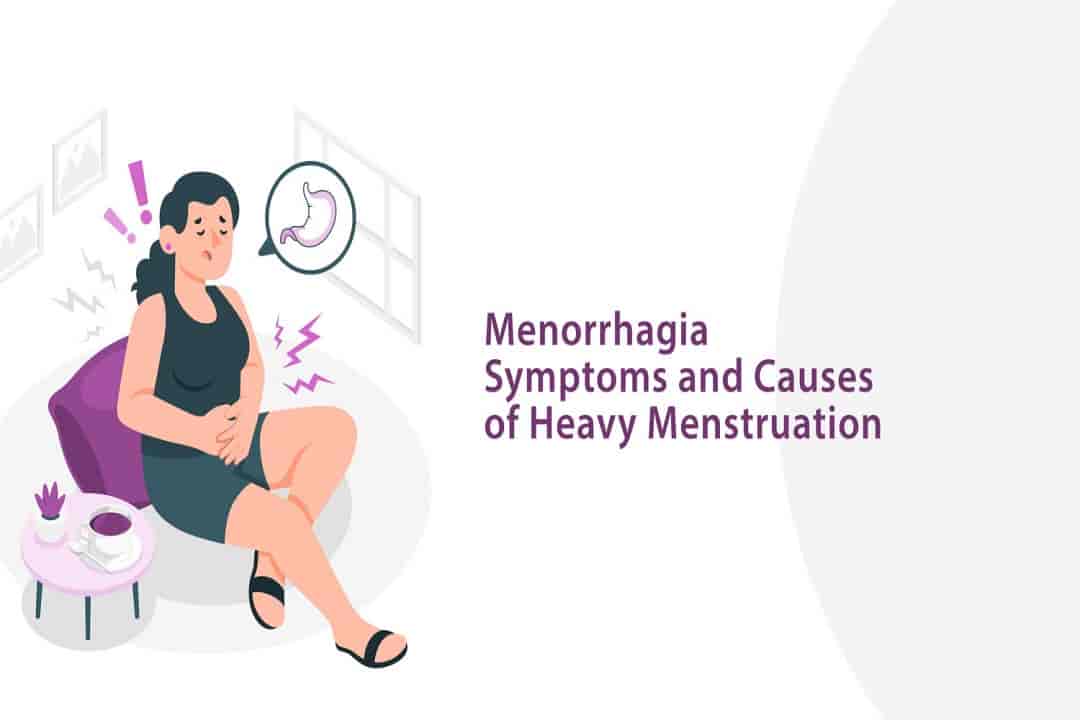Menorrhagia: Causes, Symptoms and Treament
Catagory: Laparoscopy Author: Dr E Reshma Reddy

A fairly prevalent health issue is menorrhagia, which is severe or persistent bleeding that lasts more than 8 days. Menorrhagia treatment options depend on a variety of variables, including the following: Menorrhagia medication treatment options include: Supplements with iron in the event that you have anemia in addition to the disease, and your doctor could advise taking iron supplements on a daily basis. You could start taking iron supplements if your iron levels are low but you aren’t yet anemic rather than waiting until you are.
- Drugs that are non-steroidal anti-inflammatory (NSAIDs) (help lessen menstrual blood loss. NSAIDs also have the additional effect of easing uncomfortable menstrual cramps (dysmenorrhea).
- Oral birth control. Oral contraceptives may help regulate menstrual cycles and lessen instances of heavy or protracted menstrual flow in addition to offering efficient birth control.
- Ingesting progesterone Progesterone is a hormone that may help regulate hormones and lessen menorrhagia when administered for 10 or more days throughout each menstrual cycle.
- IUD with hormones (Mirena). This kind of intrauterine device delivers levonorgestrel, a progestin that thins the uterine lining and lessens cramping and monthly blood flow.
You and your doctor may be able to address the problem by altering or discontinuing your prescription if you get menorrhagia as a result of taking hormone therapy.
If medication therapy is ineffective, surgical treatment for menorrhagia may be necessary.
Options for treatment include:
- Diagnosis and treatment (D&C). In order to lessen monthly bleeding, your doctor will open (dilate) your cervix before scraping or sucking tissue from the lining of your uterus.
- Surgical hysteroscopy The hysteroscopy technique may help with the surgical removal of a polyp that may be causing heavy menstrual bleeding by seeing your uterine cavity via a thin tube with a light.
- Ablation of the endometrium. Your doctor permanently removes the whole uterine lining using a number of methods (endometrium). Most women have minimal or no menstrual flow after endometrial ablation. Your chances of becoming pregnant are decreased with endometrial ablation.
- Endometrial removal The lining of the uterus is removed during this surgical operation using an electrosurgical wire loop. Women who have very excessive menstrual bleeding might benefit from endometrial ablation and endometrial excision. This technique lessens your chances of becoming pregnant, much as endometrial ablation.
- Surgery to remove the uterus and cervix results in permanent infertility and the end of menstruation. Anesthesia is used to accomplish hysterectomies, which need hospitalisation.
Bilateral oophorectomy, which involves the removal of both ovaries, might hasten menopause.
These surgeries, with the exception of the hysterectomy, are often performed as outpatients. Even though general anesthesia may be necessary, it’s probable that you can return home the same day.
Treatment for the underlying ailment frequently leads in lighter periods when menorrhagia is an indication of that condition, such as thyroid disease.
Recent posts
-
Reife Prostituierte - Genieße prickelnde Treffen
-
Ficken In Meiner Nähe - Sinnliche Models
-
How to Choose the Right Maternity Hospital in Tirupati
-
How to Maintain a Healthy Pregnancy: Expert Tips
-
Breaking Taboos: Candid Conversations About Women's Health Issues
-
Expert Answers to Top 5 FAQs about the Female Reproductive Lifecycle
-
Navigating Women's Health: Insights from an Obstetrician and Gynecologist
-
Journey to Motherhood: A Comprehensive Guide to Pregnancy Care
-
Sexual Health and Well-being: Expert Advice from Your Obstetrician and Gynecologist
-
Navigating Menstrual Health: Insights and Tips from Your Gynecologist
-
Self-Examination of Breasts
-
Navigating PCOD A Comprehensive Guide for Indian Women
-
Understanding Vaginal Health A Comprehensive Guide
-
Unmasking the Shadows: Smoking's Impact on Women's Health Explored
-
The Crucial Importance of Sleep for Women's Health
-
Unveiling the Benefits of a Healthy Diet for Women's Health
-
How to Increase Your Chances of a Normal Delivery: A Guide for Expectant Moms
-
Preventing and Treating Pelvic Inflammatory Disease
-
How to Deal with Vaginal Dryness and Discomfort
-
Discover the 8 Most Promising Fertility Treatment Options
